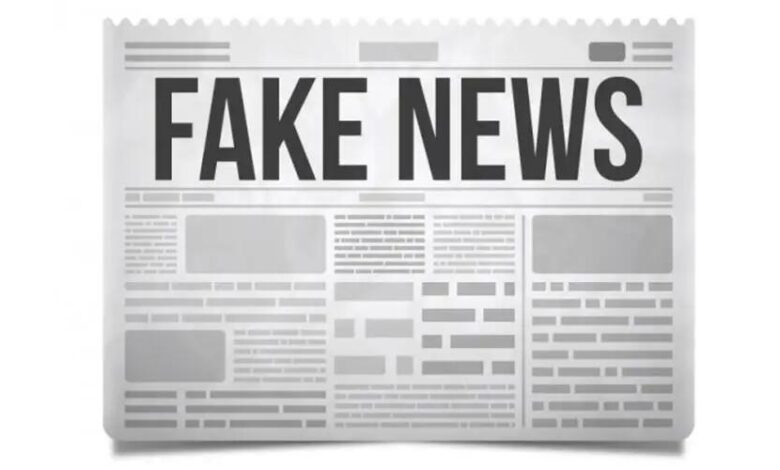Fake News in 2025: Why It Spreads & How to Combat It

Do you think fake news is yesterday’s problem? Think once more. The challenge of false information has become hitherto unheard-of in 2025, and its quick dissemination still shapes public opinion, disturbs society, and occasionally compromises democracy itself.
Why does fictitious news move so quickly? More importantly, how can concerned individuals and tech-savvy media consumers help to address this rising problem? Everything you need to know from the technological enablers like artificial intelligence to the psychological traps driving us to spread and believe false information is broken out in this essay.
To assume responsibility in the digital age, get ready with media literacy skills and practical insights.
The Pervasiveness of Fake News in 2025
Fake news today goes beyond simply misleading headlines. It’s about artificial intelligence-written stories especially meant to fool, deepfake technologies, and enhanced information campaigns. Readers are confused when sources such as Before Its News along with similar outlets blur the boundaries between opinion and reliable news.
Social media algorithms worsen this by favouring sensational and outrage-inducing material over confirmed facts. Often already done is damaged by the time fact-checkers get in. Fake news in 2025 is, all things considered faster, smarter, and more compelling than it has ever been.
Understanding the Tech Landscape
AI and its Role in Fake News
When it comes to countering false information, artificial intelligence systems now serve as a boon and a burden. On one hand, artificial intelligence helps fact-checking, spotting altered material, and spotting trends in disinformation efforts. On the other side, advanced artificial intelligence is being used to produce realistically created deepfake films and flawlessly produced propaganda impossible for the ordinary individual to detect.
The Social Media Mega-Amplifier
Social media networks are supposed to maximise interaction, hence material that triggers strong emotions like anger or terror should usually take front stage. This method creates echo chambers as people interact with content that confirms their opinions, therefore disconnecting them from different points of view.
Independent of their accuracy, psychological studies show that algorithms favour content most likely to become viral. This makes platforms rich ground for spreading disinformation methods, usually faster than fact-checking can react.
Why Do We Share and Believe Fake News?
The worst of this is not all of us agree with the bogus news we post. But why then do we share it? Fake news has complicated psychological aspects involving several elements influencing our cognitive prejudices and social behaviours.
1. Identity Alignment
People are more likely to share misinformation when it reinforces their personal identity or political beliefs. Sharing becomes less about the content’s accuracy and more about signaling group loyalty.
2. Emotional Triggers
Fake news often includes sensational headlines or emotional stories designed to provoke outrage, fear, or disbelief. The stronger the emotional appeal, the more likely we are to hit that share button.
3. Novelty Appeal
Humans are naturally drawn to novel and surprising information. It’s no wonder that fake news, which often offers “exclusive” or “hidden” information, dominates online landscapes.
4. Social Rewards
Sometimes the drive to dissemin false information is just social. Even if we believe the material on social media may not be accurate, getting likes, comments, or shares can be a strong incentive.
Even brands like IDGod, mostly known for producing fake IDs, show a more general problem with misleading information available online. Sometimes these platforms seem reliable, which fuels public uncertainty about what is reasonable and what is not.
The Real-Life Consequences of Fake News
Fake news isn’t just a harmless distraction; it has real-world impacts that can affect individuals, businesses, and even entire countries.
- Political Polarization: Fake news deepens divides, creating mistrust between different groups and eroding democratic systems.
- Public Health Misinformation: False claims about vaccines or health practices can lead to widespread harm, as seen during the COVID-19 pandemic.
- Economic Fallout: Businesses suffer from reputation damage due to false claims or fake reviews propagated online.
This isn’t a theoretical problem; fake news contributes daily to misinformation that results in tangible harm to people and communities alike.
Solutions to Spot and Combat Fake News
While tackling fake news can feel overwhelming, there are actionable steps you can take to become part of the solution.
1. Develop Media Literacy Skills
Understanding how to critically evaluate information is key. Ask yourself:
- What’s the source of this article? Is it reliable?
- Does the content cite verifiable facts and multiple sources?
- Is it designed to provoke strong emotions for shares versus providing balanced information?
2. Verify Before You Share
A few extra seconds can make all the difference. Use fact-checking sites like Snopes or FactCheck.org to verify claims before hitting the share button.
3. Support High-Quality Journalism
By subscribing to reputable news outlets, you help support the dissemination of accurate, well-researched information. It’s also a great way to avoid falling prey to unreliable sources.
4. Hold Social Platforms Accountable
Platforms that actively contribute to the spread of fake news should be held to higher standards. Public pressure can push companies to update algorithms and introduce more robust content moderation policies.
5. Trust AI Solutions for Fact-Checking
Though AI plays a role in creating fake news, it’s also one of our best tools for combating it. Many organizations now use AI-powered tools to identify misinformation in real-time.
Taking Responsibility in the Digital Age
Negotiating the digital sphere in 2025 calls for awareness. Although the tech scene changes, our behaviour as informed media consumers is rather important in helping to counteract false information. Enquire, cross-reference data, and inform others as well as yourself on the perils of false information.
Fake news is a social concern for which people like you have to start the fix. We can flip the tide against false information by assuming accountability and developing media literacy and critical thinking skills.






